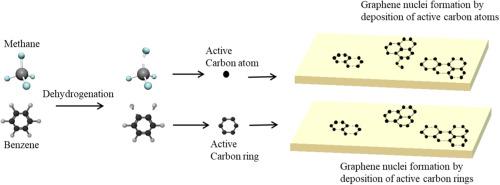Synthetic Metals ( IF 4.4 ) Pub Date : 2021-02-18 , DOI: 10.1016/j.synthmet.2021.116735 Nasrat Hannah Shudin , Mohd ’Azizir Rahim Mukri , Madzlan Aziz , Mohd Hafiz Dzarfan Othman , Masaki Tanemura , Mohd Zamri Mohd Yusop

|
Chemical Vapor Deposition (CVD) has been hugely favored when producing high-quality carbon nanomaterials and repeatable output. Despite being hugely favored, CVD typically requires a high temperature of above 1000 °C, which becomes the downside of this method. It requires a high cost and complicated processing environment, which explains the urgent need for low-temperature processing. Molecule properties of hydrocarbon precursors are believed to have played an essential role in CVD synthesis as it can affect the growth temperature, yield, crystallinity properties and indirectly affect the morphology of the carbon nanomaterials. In this review, various solid, liquid, and gaseous hydrocarbon precursors and how they affect the growth temperature of carbon nanomaterials syntheses via CVD are discussed.
中文翻译:

固态,液态和气态碳氢化合物前体在化学气相沉积生长碳纳米材料生长温度中的作用
在生产高质量的碳纳米材料和可重复输出时,化学气相沉积(CVD)已受到广泛青睐。尽管受到极大欢迎,但CVD通常需要1000°C以上的高温,这成为该方法的缺点。它要求高成本和复杂的加工环境,这解释了对低温加工的迫切需求。据信烃前体的分子性质在CVD合成中起着至关重要的作用,因为它可以影响生长温度,产率,结晶度性质并间接影响碳纳米材料的形态。在这篇综述中,讨论了各种固体,液体和气态烃前体,以及它们如何通过CVD影响碳纳米材料合成的生长温度。



























 京公网安备 11010802027423号
京公网安备 11010802027423号